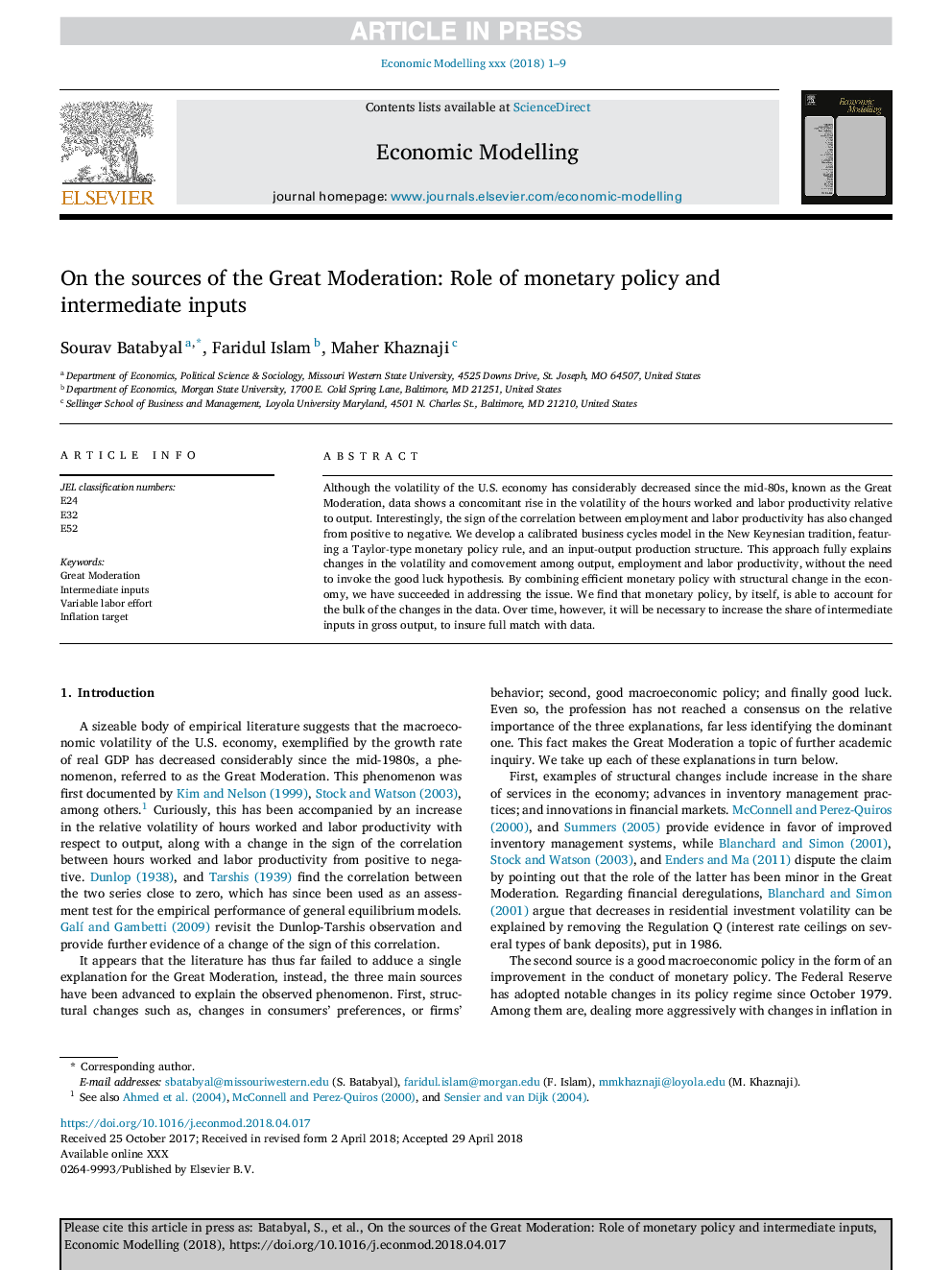| Article ID | Journal | Published Year | Pages | File Type |
|---|---|---|---|---|
| 8947962 | Economic Modelling | 2018 | 9 Pages |
Abstract
Although the volatility of the U.S. economy has considerably decreased since the mid-80s, known as the Great Moderation, data shows a concomitant rise in the volatility of the hours worked and labor productivity relative to output. Interestingly, the sign of the correlation between employment and labor productivity has also changed from positive to negative. We develop a calibrated business cycles model in the New Keynesian tradition, featuring a Taylor-type monetary policy rule, and an input-output production structure. This approach fully explains changes in the volatility and comovement among output, employment, and labor productivity, without the need to invoke the good luck hypothesis. By combining efficient monetary policy with the structural change in the economy, we have succeeded in addressing the issue. We find that monetary policy, by itself, is able to account for the bulk of the changes in the data. However, it will be necessary to increase the share of intermediate inputs in gross output over time to ensure a full match with data.
Related Topics
Social Sciences and Humanities
Economics, Econometrics and Finance
Economics and Econometrics
Authors
Sourav Batabyal, Faridul Islam, Maher Khaznaji,
